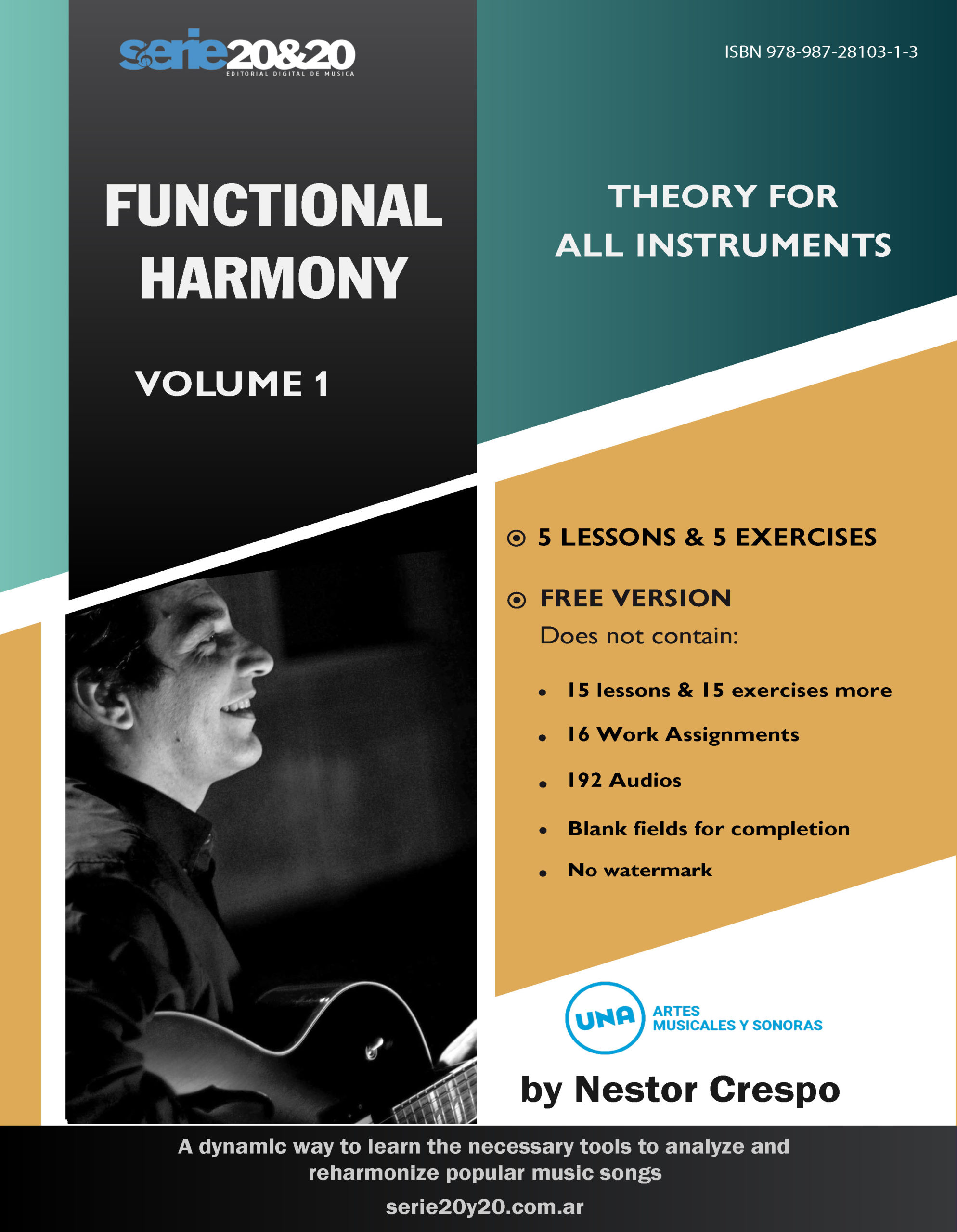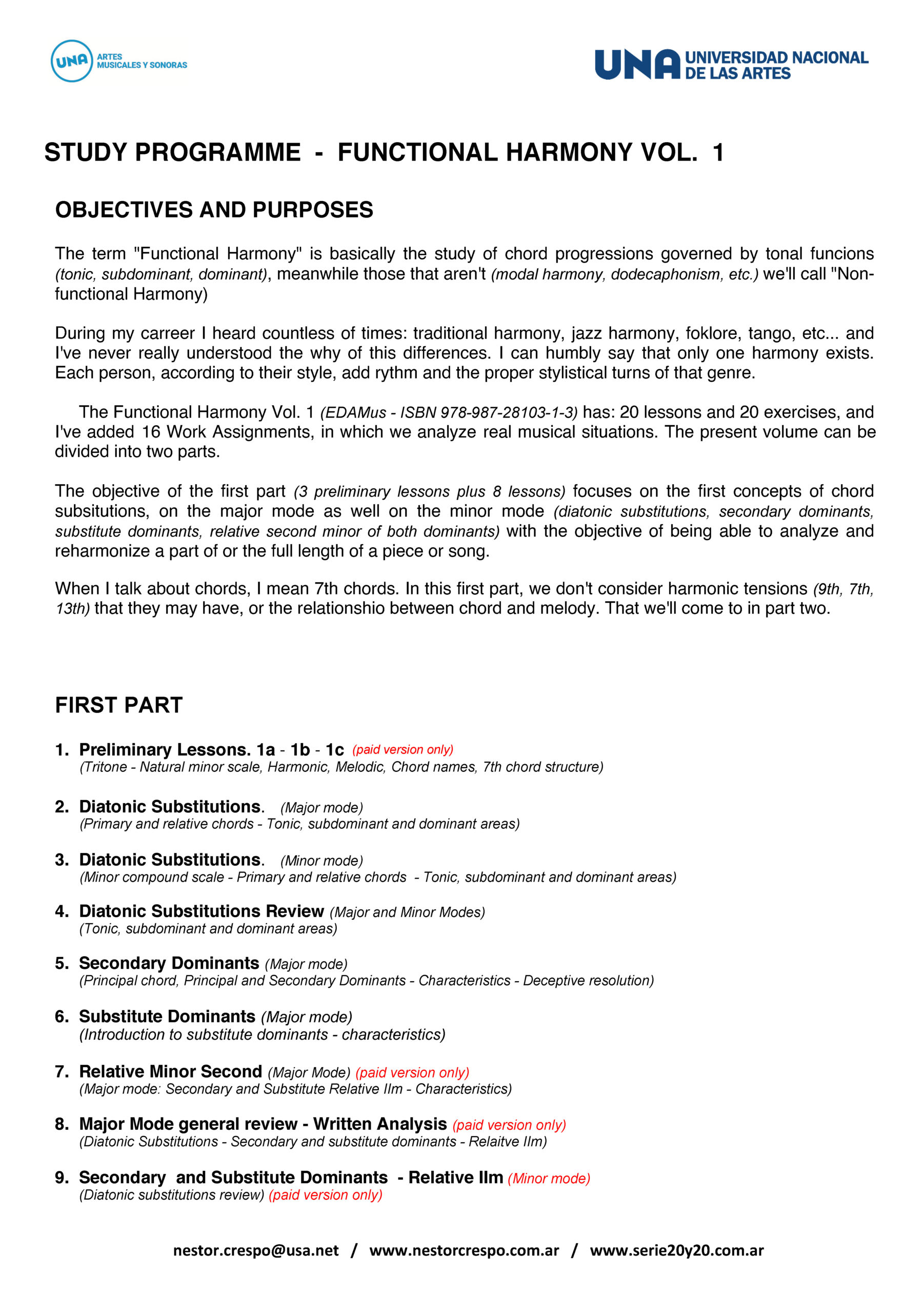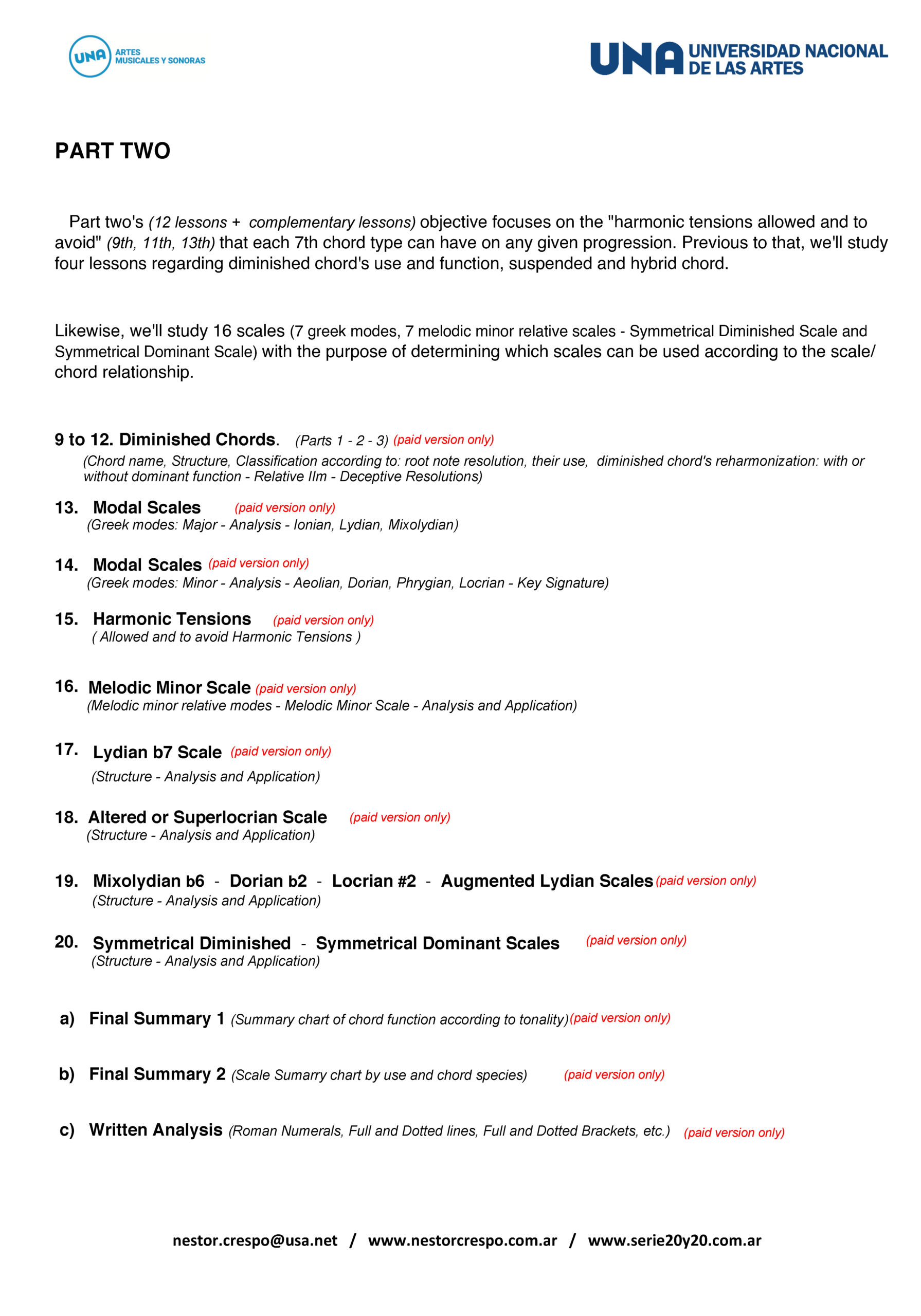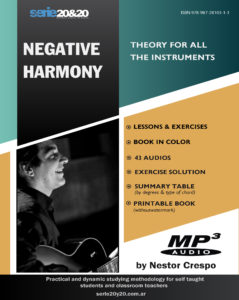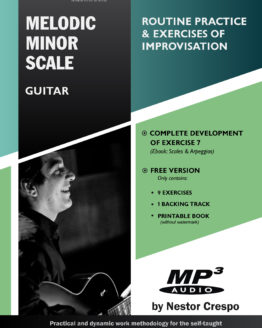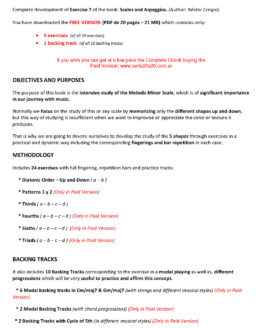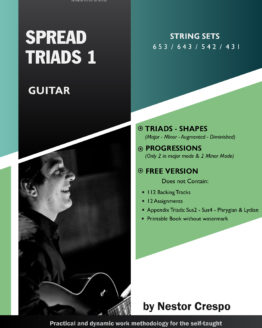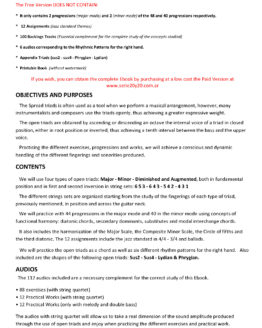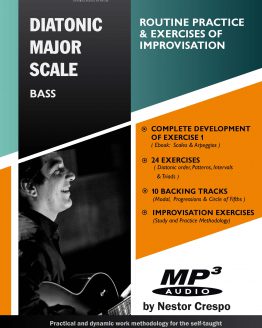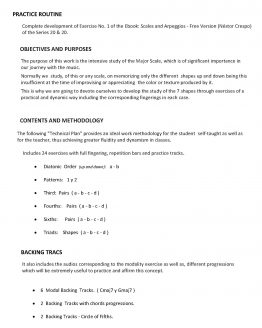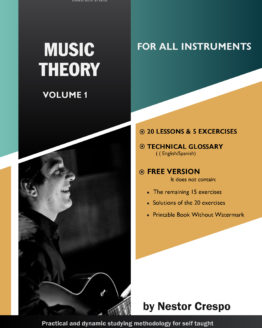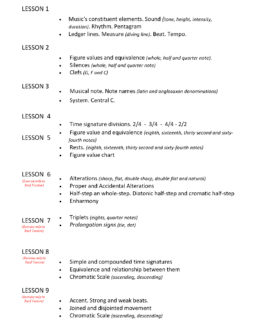If you wish you can purchase the Complete Book by CLICKING HERE
CONTENTS
You are downloading the FREE VERSION (21 Pages PDF – 9 MB) which does not contain:
* The remaining 15 Lessons and 15 Exercises (essential for the practice of the 20 lessons) (See index in images)
* The 16 Practical Works / Assignments (Essential to check what you have learned)
* 192 Audios. (Essential complement for the development of the harmonic ear)
* Fields to complete. (Without having to print on paper)
* Printable Book (without watermark)
Practical and dynamic work methodology for the self-taught student as well as for the teacher in class
GOALS AND PURPOSES
The Functional Harmony Ebook 1 consists of: 20 lessons and 20 exercises and 16 Practical Works with which we will analyze different real situations with the firm objective of being able to analyze and reharmonize part or all of a work.
The term “Functional Harmony” is basically the study of chord progressions governed by tonal functions (tonic, subdominant, dominant), meanwhile those that aren’t (modal harmony, dodecaphonism, etc.) we’ll call “Non-functional Harmony)
During my career I heard countless of times: traditional harmony, jazz harmony, folk, tango, etc… and I’ve never really understood the why of this differences. I can humbly say that only one harmony exists.
Each person, according to their style, add rhythm and the proper stylistical turns of that genre.
The Functional Harmony Vol. 1 (EDAMus – ISBN 978-987-28103-1-3) has: 20 lessons and 20 exercises, and I’ve added 16 Work Assignments, in which we analyze real musical situations.
The present volume can be divided into two parts.
The objective of the first part (3 preliminary lessons plus 8 lessons) focuses on the first concepts of chord substitutions, on the major mode as well on the minor mode (diatonic substitutions, secondary dominants, substitute dominants, relative second minor of both dominants) with the objective of being able to analyze and reharmonize a part of or the full length of a piece or song.
When I talk about chords, I mean 7th chords. In this first part, we don’t consider harmonic tensions (9th, 7th, 13th) that they may have, or the relationship between chord and melody. That will come to in part two.
For more information please contact to the author: nestor.crespo@usa.net
Related Books
